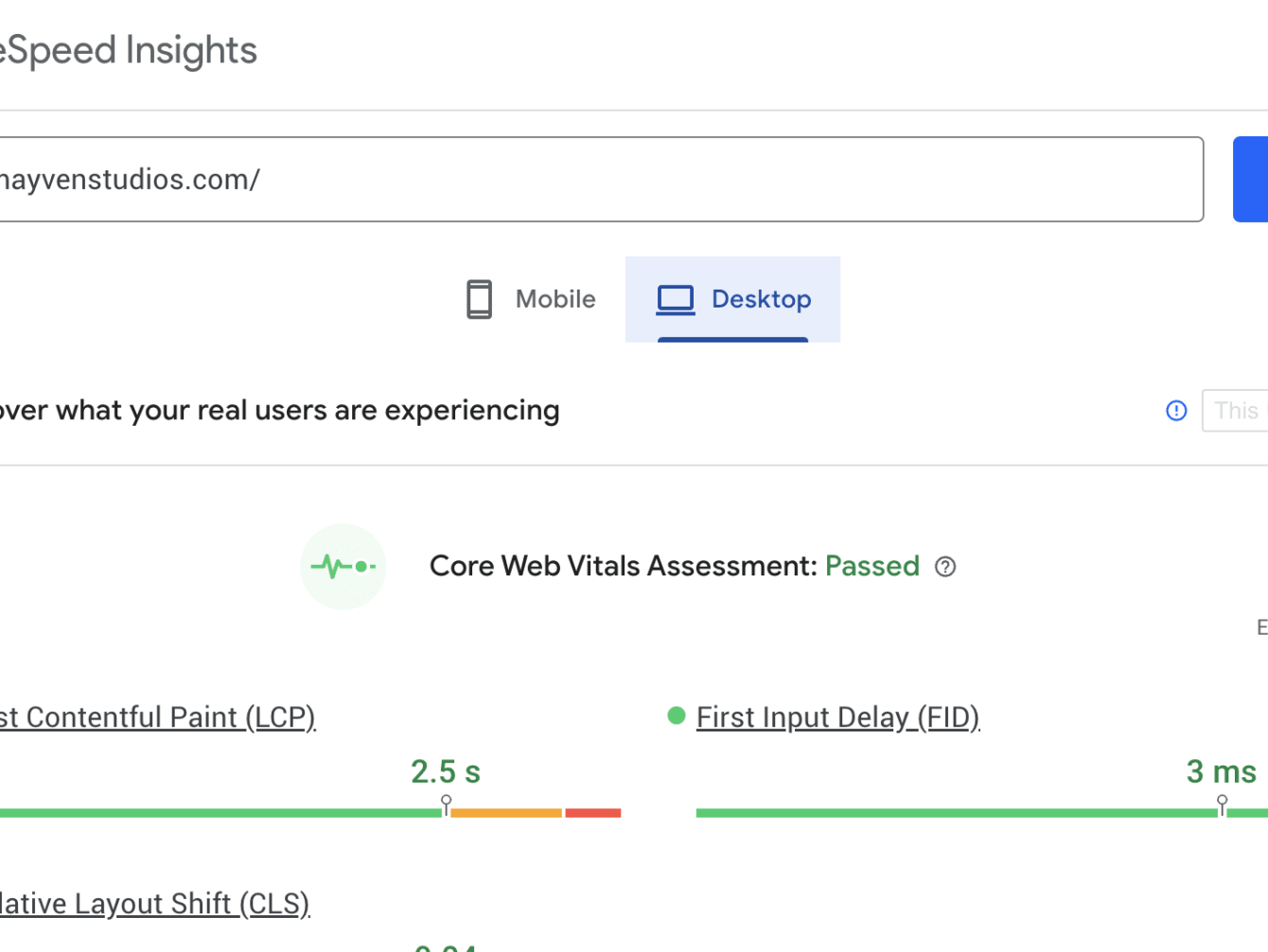How does Core Web Vitals work?
Google Core Web vitals refers to a series of metrics that measure the overall quality of your digital content, by focusing on the user experience.
What are Google Core Web Vitals?
The metrics explored by Google Core Web Values are related to interactivity, loading speeds and the visual stability of your website. They include:
- Largest Contentful Paint (LCP)
- First Input Delay (FID)
- Cumulative Layout Shift (CLS).
Largest Contentful Paint
The LCP assesses how well your website performs in terms of loading speed, by timing how long it takes for your largest element of content to load. Given that 1 in 2 people will leave a website if it takes more than 6 seconds to load, this is an important metric to improve upon. Typically, you should aim for an LCP score of 2.5 or below.
First Input Delay.
This method is used to measure the interactivity of your website, by analysing how long it takes your website to ‘respond’ to a user’s interaction. For example, how quickly does clicking one tab take them to another page. Users favor sites that are responsive, and a good FID score should be less than 100 milliseconds.
Cumulative Layout Shift.
CLS measures visual stability by ensuring the amount of layout shifting that occurs when a page is loading. In order to optimise the user experience, you should aim for a CLS score of less than 0.01.
How To Measure Core Web Vitals.
Google provides users with all of the tools they need to measure their pre-defined core web vitals. This includes:
- Lighthouse
- PageSpeed insights Tools
- Chrome User Experience Report
Measuring core web vitals is important as it enables you to ensure your website is easily accessible and functioning appropriately. It also factors into your search engine ranking, meaning it is instrumental when it comes to putting your brand on the map.
Technical Considerations.
There are various technical considerations that you must consider when looking to improve your Core Web Vitals. For example, this includes:
- Image Optimization. Optimizing images can improve your core web vitals by ensuring they load quickly.
- Efficient JavaScript and CSS. Ensuring your JavaScript and CSS are efficient and not resulting in slow-rendering times will boost your Core Web Vitals.
- Server response times. There are many ways in which you can reduce server response times, such as by using a content delivery network.
Final Thoughts.
By focusing on improving these websites, you can set your business up for success. Not only will you rank higher on search engines such as Google, you’re also improving the user experience.




